
ZOTAC Quietly Releases GeForce GT 710 Graphics Card with PCIe x1 Interface
ZOTAC has quietly introduced a new video card which is compatible with virtually every desktop PC released in the recent years. The new GeForce GT 710 graphics card with PCIe 3.0 x1 interface is not going to outperform modern higher-end iGPUs in games, but it will help owners of very low-cost systems, particularly those which may not even have a PCIe x16 slot, to add support for another display, or improve over the performance of completely outdated iGPUs.
The ZOTAC GeForce GT 710 1 GB (ZT-71304-20L) video card is powered by a cut-down version of NVIDIA’s GK208 GPU with 192 CUDA cores, 16 texture units and 8 ROPs. The GPU is based on the Kepler architecture, which supports Direct3D feature level 11_0, OpenGL 4.5 as well as OpenCL 1.2 APIs. The chip is clocked at 954 MHz and has compute performance of around 366 GFLOPS (well below that of modern iGPUs). The card is equipped with 1 GB of DDR3-1600 memory featuring 12.8 GB/s bandwidth.
The card comes in half height half length (HHHL) form-factor and is shipped with two brackets (for low-profile and standard PCs) to maximize compatibility with various computers. The graphics board has minimal (19W) power consumption and does not require active cooling (which means, it is also whisper quiet).
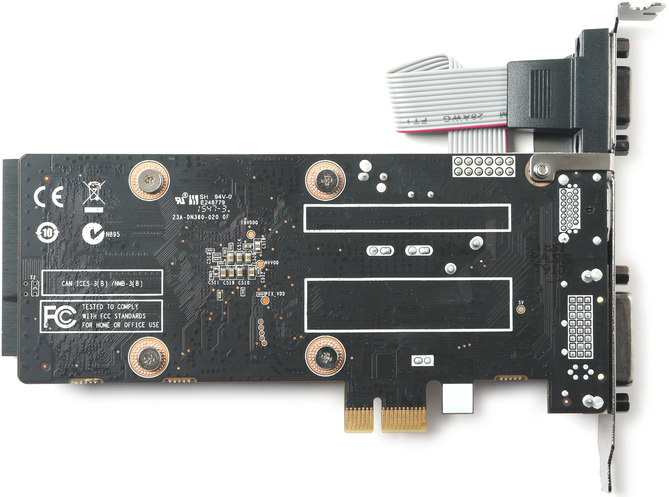
The main selling points of the ZOTAC GT 710 are its PCIe 3.0 x1 interface as well as three display outputs — DVI, HDMI 1.4 and D-Sub. Some entry-level PCs simply do not have PCIe x16 or x8 slots to install a graphics card, but virtually all desktops released in the last ten years have at least one PCIe x1 slot. ZOTAC’s new graphics card promises to be compatible with such systems. If owners of such PCs need to add one or two more display outputs, or just find their iGPUs too slow in Windows 10, they can buy the GeForce GT 710 1 GB PCIe 3.0 x1 graphics adapter. The board supports up to three displays, which should be enough for many workloads.
| NVIDIA GPU Specification Comparison | ||||||
| GT 710 | GT 720 | GT 630 | GT 610 | |||
| CUDA Cores | 192 | 192 | 192 | 48 | ||
| Texture Units | 16 | 16 | 16 | 8 | ||
| ROPs | 8 | 8 | 16 | 4 | ||
| Core Clock | 954MHz | 797MHz | 875MHz | 710MHz | ||
| Shader Clock | N/A | N/A | N/A | 1620MHz | ||
| Memory Clock | 1.8GHz DDR3 | 1.8GHz DDR3/ 5GHz GDDR5 | 1.8GHz DDR3 | 1.8GHz DDR3 | ||
| Memory Bus Width | 64-bit | 64-bit | 64-bit | 64-bit | ||
| VRAM | 1GB or 2GB | 1GB or 2GB | 1GB or 2GB | 1GB | ||
| TDP | 19W | 19W | 50W | 29W | ||
| GPU | GK208 | GK208 | GK107 | GF119 | ||
| Launch Timeframe | January, 2016 | March, 2014 | April, 2012 | May, 2012 | ||
| Launch Price | $30 - $50 | $49 | OEM | $49 | ||
When it comes to performance in games, it is unlikely that the GeForce GT 710 is fast enough for more or less demanding titles. The product may be faster than iGPUs integrated into entry-level Celeron or Pentium processors, but only in various online games that do not require a lot of GPU horsepower anyway.
As for market perspectives of ZOTAC’s GeForce GT 710 1 GB PCIe 3.0 x1, it should be noted that this is a niche product designed for owners of low-end systems, who need a better GPU or additional display outputs. Typically, people, who use such systems do not upgrade often, hence, ZOTAC’s new video card will hardly become a bestseller. Nonetheless, it will be a unique device for those who really need it.
ZOTAC does not list recommended prices on its web-site. However two stores which sell the device in Europe have it listed €58.30 ($65.8) and €84.7 ($95). This is definitely higher than you'd otherwise expect for a bottom-tier NVIDIA card, though it may very well be that retailers are counting on its unique nature.
Read More ...
The Samsung 750 EVO (120GB & 250GB) SSD Review: A Return To Planar NAND
The Samsung 750 EVO is a new budget SATA SSD using 16nm planar TLC NAND flash instead of Samsung's highly-praised 3D V-NAND. The 750 EVO otherwise has much in common with the 850 EVO, now Samsung's mid-range SATA drive. Available only in 120GB and 250GB capacities, the 750 EVO is aimed only at the niche of systems needing a small cheap drive.
Read More ...
Samsung Foundry Updates: 7nm EUV, 10LPP, and 14LPC
Earlier this week, Samsung announced a number of updates on the foundry side of their business. While process technology might not be necessarily as interesting as the actual end product from a consumer perspective, it can often give us a good idea for what to expect in terms of performance and power from future products. Of course, it’s up to the various fabless chip design companies around the world to actually exploit the full potential of a process, but in general power and performance are often gated by process node. Almost everything in computing revolves around supporting abstractions, which inevitably means overhead to support these abstractions, so progress at the foundry level is critical for moving the industry forward as a whole.
The first, and probably most important announcements are related to process roadmap. The most important point that Samsung made here was that they fully intend to deploy extreme UV (EUV) in mass production for their 7nm processes, which is a pretty significant claim to make as even imec was reluctant to say that EUV would be happening at 7nm. However, those at Samsung seem to believe that this is necessary because otherwise the first metal interconnect layer would require triple patterning, and the transistors themselves would likely be facing similar multiple patterning requirements.
While we’ve discussed EUV before and the challenges that it faces, Samsung believes that triple patterning is not really a viable solution because the number of masks needed goes from roughly 60 or so with double patterning to 90 or so with triple patterning, which results in a steep increase in costs and long lead times for prototypes and production ramp as the masks are made with e-beam lithography for precision, so mispredict penalty for a design isn’t nearly as severe as it would be with a 7nm 193i-only process. Of course, EUV is only going to be used in critical layers, so 193i will still be used for the majority of the layers in the chip, but even so EUV will still be a major hurdle for Samsung to clear here as EUV sources still don’t have enough power to be viable for mass production. Interestingly, Samsung claims that they have mask inspection tools internally for EUV masks, which could help them get to deploying EUV sooner in mass production.
On 10nm, things are less murky as it’s pretty clear that this process will be able to mostly be scaling of the 14nm node to improve performance and possibly improve cost, so the primary update here is that 10LPP (Low Power Plus) will be following 10LPE (Low Power Early) for a 10% improvement in performance. A design done in 10LPE can be directly ported to 10LPP with no new design work.
At 14nm, Samsung seems to be doing well here as their fabs in Korea and Texas are running full time, with over 0.5M wafers shipped and defect density below 0.2 defects/cm^2 in production. This defect density is said to be highly competitive, but I’m not really qualified to say whether this is the case. The primary update of note at 14nm is that 14LPC will have an RF option by the end of the year to enable connectivity for applications like automotive and transceivers.
On the process side, 28nm is still pretty critical for a number of applications as this is the last process where planar is viable. Even if 20nm is technically the last planar process, it’s not all that attractive compared to 28nm due to cost, DIBL leakage, and sheer heat density. Samsung’s 28FDS process has been in mass production for some time now as a higher-end node designed to provide ~20nm FinFET class performance on 28nm, but the main news of note here is that 28FDS will have an RF process which adds elements like inductors and is properly characterized to allow for high speed electronics to work properly. 28FDS will also have embedded non-volatile flash memory to enable embedded applications where some memory is needed as a ROM. Kelvin Low of Samsung noted that FD-SOI is also notable for reducing soft error rate relative to bulk CMOS which reduces the need for design-level mitigations, although this was mostly in the context of safety-critical systems that could be seen in automotive and other segments.
On the design and packaging services side, Samsung is providing more here than before in the form of reference design flows for their 14nm process, and a similar flow will be available for 10nm. Packaging services that used to be for internal use only will also be opened up, with things like 2.5D interposers to enable HBM on GPUs and similar use cases, although it was noted that in that particular case the interposer is currently a bit too expensive for use outside of high-priced components like GPUs. Samsung is also providing some IP blocks for customers to speed up time to market for things like DDR4 and PCI-E controllers.
Overall, Samsung is seems to be quite aggressive on the foundry side and it’ll be interesting to see whether this pays off. Of course, there are the inevitable questions of whether this is comparable to Intel or TSMC’s process, but for now we can’t really say absent details about the pitches of the key layers, operating voltages, and other aspects that we need to consider in order to really compare process nodes. We saw how Samsung’s 14nm push paid off, so it’ll be interesting to see how things shake out with 7nm.
Read More ...
Microsoft Announces Q3 FY 2016 Results: Lower Revenue But Strong Cloud Growth
Today Microsoft also announced their earnings for the third quarter of their 2016 fiscal year. Revenue, income and earnings were all down compared to Q3 2015, with revenue for the quarter of $20.5 billion, which is down 6%. Operating income was $5.3 billion, down 20%, and net income was $3.8 billion, which is down 25%. Earnings per share were $0.47, down 23% compared to a year ago.
| Microsoft Q3 2016 Financial Results (GAAP) | |||||
| Q3'2016 | Q2'2016 | Q3'2015 | |||
| Revenue (in Billions USD) | $20.531 | $23.796 | $21.729 | ||
| Operating Income (in Billions USD) | $5.283 | $6.026 | $6.594 | ||
| Gross Margin (in Billions USD) | $12.809 | $13.924 | $14.568 | ||
| Margins | 62.4% | 58.5% | 67.0% | ||
| Net Income (in Billions USD) | $3.759 | $4.998 | $4.985 | ||
| Basic Earnings per Share (in USD) | $0.48 | $0.63 | $0.61 | ||
Microsoft also reported non-GAAP earnings, which exclude revenue deferrals and the impact of restructuring charges. On a non-GAAP basis, revenue was $22.1 billion, which is up 2% year-over-year. Operating income was $6.8 billion, up 1%, and net income was $5.0 billion, down 3%. Earnings per share were $0.62, which was flat year over year. In addition to non-GAAP metrics, Microsoft also added constant currency results due to the high US dollar, and based on constant currency (CC), revenue was up 5%, operating income was up 10%, net income was up 6%, and earnings per share were up 10%.
Productivity and Business Processes, which includes Office commercial and consumer, and Office 365 commercial and consumer, as well as Dynamics products, had revenue for the quarter of $6.52 billion, which was up 1% year-over-year, or 6% based on CC. However, the gross margin for this segment fell 4%, and operating income came in at $2.99 billion, which was down 7%. Microsoft attributes the lower margins due to higher numbers of people using cloud services, which means, at least for the moment, the cloud offerings from Microsoft are making them less money than the non-subscription model, which is pretty interesting. I would guess that a lot of that is due to the large spending that is taking place to constantly expand infrastructure to handle new clients, but that is only a guess.
Looking at the numbers of Office though are very interesting. The consumer version of Office 365 increased from 12.4 million a year ago to 22.2 million this year. That is an increase in seats of 79% year-over-year, which is extremely good. A few years ago, I don’t think a subscription version of Office would have worked, but clearly Microsoft has found a solid hook for consumers with the packages. Even more impressive is the commercial seats for Office 365 business. Microsoft doesn’t often announce their user base for this, but on the earnings call, CEO Satya Nadella announced that they have over 70 million monthly active users for Office 365 commercial, and that is an increase in seats of 57% year-over-year. Also good news for Microsoft is that they have seen a 35% quarter-over-quarter growth in their premium protection services offered as part of the higher tiers of Office 365, and a key driver is the new premium tier, Office 365 Suite E5. Not to be outdone by Office, Dynamics CRM Online has seen its seats more than double year-over-year, and 80% of new CRM customers are choosing the cloud version.
Next up is the Intelligent Cloud segment, which includes server and server products, as well as cloud infrastructure such as Azure. Revenue for the quarter was $6.10 billion, which is up 3% year-over-year, or 8% in CC. Gross margin declined 2% (up 3% CC) year-over-year, and once again due to a higher mix of cloud services. The infrastructure expenditure here is a lot, and operating expenses grew 13% with investments in cloud infrastructure. With the lower margins and higher expenses, operating income fell 14% to $2.19 billion. Server products and cloud services had revenue growth of 5% CC, which is pretty stable, but it is Azure that is the big growth here. Azure revenue grew 120% CC this quarter, compared to the same time last year. Azure compute usage and Azure SQL usage more than doubled, and the Enterprise Mobility customer install base grew almost four times.
AWS is still the king of cloud computing, but Microsoft continues to make big gains here. They also are the only major cloud company to offer a hybrid offering, both with the traditional Windows Server elements, as well as the Azure Stack which can be run locally. At Build, they emphasised that are pushing towards more services in Azure as well, rather than having to have companies do the traditional VMs in the cloud. They still have a long way to go to catch AWS, but they continue to show this is a strength going forward.
The final segment of Microsoft is More Personal Computing, and this includes Windows, Surface, Xbox, phone, and search. Phone has certainly been a sore spot for Microsoft, and they took some big write-downs last year to basically write off the entire Nokia acquisition. For this quarter, revenue for this segment was $9.46 billion, which is up 1% year-over-year, or 3% CC. The increase in revenue this quarter was attributed to search and Surface, but lower phone and Windows revenue were a negative impact. Gross margin was 2% higher, once again due to search and Surface, and operating expenses fell 14% with the lower spending on phone. Operating income grew 57% for the quarter, to $1.65 billion. On a revenue basis, this is the largest single segment in Microsoft, but the margins for consumer are a lot lower than the enterprise services.
Windows 10 is now on over 270 million monthly active devices, but Windows OEM Pro declined 11% this quarter, which was worse than the commercial PC market. Revenue for non-Pro though grew 15%, which is quite a bit better than the PC market as a whole did, due to a bigger ratio of higher priced devices being sold. Windows volume licensing grew 6% CC.
On the devices side, revenue for devices fell 9% CC, and this is due to Lumia phone sales dropping off a cliff. Revenue for Lumia fell 46% year-over-year. This negative marred a great performance by the Surface line, and Surface had a 61% CC increase in revenue to $1.111 billion for the quarter, which is the second straight quarter where Surface was over $1 billion in revenue. Sales of the Surface Pro 4 and Surface Book are doing well.
Microsoft no longer breaks out sales numbers for Xbox, but gaming revenue grew 6% CC for the quarter. Microsoft is seeing an increase in Xbox Live transactional revenue, and they have a 26% increase in Xbox Live users compared to a year ago. Video game revenue was up 11% CC, and I would imagine a good chunk of that is still Minecraft. Xbox hardware revenue declined, with less sales of the Xbox 360 which is now officially out of production.
Search revenue, excluding traffic acquisition costs, grew 18% CC. Microsoft is getting more revenue per search, and search volume is also up. As a tidbit, they said that 35% of search revenue in the month of March was on Windows 10 devices.
| Microsoft Q3 2016 Financial Results (GAAP) | |||||
| Productivity and Business Processes | Intelligent Cloud | More Personal Computing | |||
| Revenue (in Billions USD) | $6.52 | $6.10 | $9.46 | ||
| Operating Income (in Billions USD) | $2.99 | $2.19 | $1.65 | ||
| Revenue Change YoY | +1%, +6% CC | +3%, +8% CC | +1%, +3% CC | ||
| Operating Income Change YoY | -7% | -14% | +57% | ||
Microsoft paid $6.4 billion back to investors in Q3 2016, with $3.6 billion in share buybacks and $2.8 billion in dividends. Looking ahead to Q4, Microsoft expects revenues to be between $21.7 billion and $22.4 billion.
The company continues to move from a traditional software company to a cloud infrastructure player, and with the results today we can see some big gains there. It was great to get an updated number for Office 365 commercial seats, which are now at over 70 million monthly users, and the growth in Azure is very large. Microsoft missed the boat on mobile, but are making up for it with platform agnostic solutions, and they are looking heavily towards conversations-as-a-service with bot integration in Skype and more. The Surface lineup is now very strong, when only a few years ago it had to endure a massive write-down. Phones, on the other hand, were basically non-existent and the acquisition of Nokia seems to be all for naught.
Source; Microsoft Investor Relations
Read More ...
AMD Reports Q1 FY 2016 Results: Lower Revenue But New IP Licensing Agreement Reached
AMD announced their first quarter results from fiscal year 2016. AMD has certainly been struggling of late, but CEO Lisa Su made the announcement that AMD had made a joint-venture with THATIC for x86 processor development for the Chinese market. AMD will receive $52 million immediately and the total agreement is for $293 million, plus future royalties. This is a significant agreement for AMD, and licensing their IP is one of the ways they hope to get back to profitability.
Looking at the overall quarter, AMD had revenues of $832 million, which is down a significant 19% from last year. But the good news for AMD is that their gross margin is up to 32%, an increase over last quarter and having it come back to the same level as a year ago. AMD reported an operating loss of $68 million for the quarter, which is an improvement over the $137 million loss last year. The net loss for the quarter was $109 million, or $0.14 per share, which is once again an improvement over last year’s $180 million loss, or $0.23 per share.
| AMD Q1 2016 Financial Results (GAAP) | |||||
| Q1'2016 | Q4'2015 | Q1'2015 | |||
| Revenue | $832M | $958M | $1030M | ||
| Gross Margin | 32% | 30% | 32% | ||
| Operating Income | -$68M | -$49M | -$137M | ||
| Net Income | -$109M | -$102M | -$180M | ||
| Earnings Per Share | -$0.14 | -$0.13 | -$0.23 | ||
AMD also reports non-GAAP results, which exclude restructuring costs and stock-based compensation. On a non-GAAP basis, AMD had an operating loss of $55 million, compared to a $30 million loss last year where they had high restructuring charges. Gross margin came in at the same 32%, and there was a net loss of $96 million, or $0.12 per share, compared to a net loss of $73 million, or $0.09 per share last year.
| AMD Q1 2016 Financial Results (Non-GAAP) | |||||
| Q1'2016 | Q4'2015 | Q1'2015 | |||
| Revenue | $832M | $958M | $1030M | ||
| Gross Margin | 32% | 30% | 32% | ||
| Operating Income | -$55M | -$39M | -$30M | ||
| Net Income | -$96M | -$79M | -$73M | ||
| Earnings Per Share | -$0.12 | -$0.10 | -$0.09 | ||
The Computing and Graphics segment is still the largest part of AMD, and for this quarter they had revenue of $460 million. That is a drop sequentially of 2%, and a year-over-year drop of 14%, but AMD improved their operating loss for this segment, with a loss of $70 million for the quarter. This is an improvement over the $99 million loss last quarter, and an improvement over the $75 million loss a year ago. The revenue drop from last quarter was attributed to a drop in desktop processor sales, and the annual drop is due to a decline in notebook processor sales. Lowered operating expenses were the reason for the better operating loss levels, but both desktop and notebook processors are seeing a decrease in average selling price for AMD. GPU sales also dropped average selling price compared to last quarter, but increase year-over-year with higher channel and professional GPU prices.
| AMD Q1 2016 Computing and Graphics | |||||
| Q1'2016 | Q4'2015 | Q1'2015 | |||
| Revenue | $460M | $470M | $532M | ||
| Operating Income | -$70M | -$99M | -$75M | ||
The Enterprise, Embedded, and Semi-Custom segment had revenue of $372 million for the first quarter of this year, which is down 24% from last quarter and 25% from last year. This group is profitable though, although just slightly this quarter, with an operating income of $16 million for the quarter. This compares to a $45 million income in Q1 2015 though, which is a big drop when AMD’s already cutting it pretty close. AMD attributes the revenue drop to lower sales of semi-custom SoCs, of which a big market is consoles. It makes sense that as the consoles mature, sales will trail off, but AMD did well to get inside both the PlayStation 4 and Xbox One on this round of consoles, since both have been selling well compared to the previous generation. The decrease in operating income due to lower sales and higher R&D spending, but was offset by a $7 million IP licensing deal.
| AMD Q4 2015 Enterprise, Embedded, and Semi-Custom | |||||
| Q1'2016 | Q4'2015 | Q1'2015 | |||
| Revenue | $372M | $488M | $498M | ||
| Operating Income | $16M | $59M | $45M | ||
The All Other category had an operating loss of $14 million for the quarter, compared to a $107 million loss last year. That is because AMD had some large restructuring charges on the books last year.
Unsurprisingly, AMD is still sorting out their future, and their results reflect that. They have had a pretty large processing disadvantage compared to Intel for a long time now, and later this year they will finally start shipping on 14 nm nodes, but it is the deals for IP licensing which bring in constant revenue without the associated costs of revenue which are the big news this quarter. With rumours of updated consoles, they may also get a bump in their semi-custom SoC if and when that happens. Looking to next quarter, AMD is expecting revenues to come in 15% higher, plus or minus 3%.
Source: AMD Investor Relations
Read More ...
China Calling: AMD Forms Joint Venture for x86 Server SoCs in China
As part of the release of AMD’s Q1 2016 financial results (more on that later today) the company is announcing that they are forming a new joint venture to develop x86 SoCs for the Chinese market. The hereto unnamed joint venture will see AMD pair up with Tianjin Haiguang Advanced Technology Investment Co., Ltd (THATIC), who is an investment arm of the Chinese Academy of Sciences. The deal will, in a nutshell, see AMD provide the joint venture with x86 and SoC IP, along with significant engineering and other technical resources, while THATIC provides the remaining technical resources and the financing behind the venture. Overall the deal will net AMD $293 million from the licensing agreement, plus further royalties in the future.
As this is a fairly complex deal, I first want to jump into the technical aspects of the joint venture. In a brief call with AMD, the company made it clear that this is an x86 play for the Chinese server market, with AMD licensing/contributing their high performance x86 IP along with their SoC IP. AMD’s GPU and ARM IP is not part of the deal, and at this time AMD is not specifying which precise x86 IP is part of the deal. However given the timing of the announcement and the necessary ramp-up for products, I believe it’s very likely that the bulk of the x86 IP will be from AMD’s forthcoming Zen x86 processor. Either way, this a very straightforward play towards expanding x86 server processor usage inside of China.
However what those products will be remains to be seen. While AMD is announcing the formation of the joint venture, their participation, and what they stand to gain, any actual product announcements are the responsibility of the joint venture. What AMD is emphasizing at this time is that this is a joint venture for high performance processors, that it is designed to complement AMD’s existing server efforts, and that the SoCs will be leading-edge products. Just what a high performance processor is – and whether that means a multicore-heavy design or something using fewer, higher performing cores – will definitely be a burning question between now and the joint venture’s own product announcements. Overall, at this point what AMD is describing does not sound like the joint venture will simply be developing cheaper, lower performing processors for the Chinese market.
More obvious of an answer however is why AMD and partner THATIC would want to enter into this agreement. China as a whole continues to heavily invest in modern semiconductor technologies, both on the IP side and the manufacturing side, as semiconductors have historically been highly profitable for the winner and a good proxy for other technology development. At the same time ongoing geopolitical issues have called into question whether China can truly trust processors designed groups in foreign nations, and as a result there’s great incentive to design their own processors internally with security features specifically designed by and for the Chinese market.
As AMD does not develop much of their own security technology – they use ARM’s TrustZone – this complements those needs well, seeing as how THATIC would need to contribute security technology anyhow. The end result is that this will allow the joint venture – essentially a Chinese entity – to design their own high performance x86 server SoCs to meet the performance, compatibility, and security needs of the Chinese market.
This comes as the latest event in AMD’s efforts to further develop themselves into a full spectrum firm that develops processors internally and develops semi-custom designs alongside clients. The joint venture in turn takes it one step further, with AMD essentially providing IP to an outside entity and their semi-custom design, rather than the entity coming to AMD. At the same time the parallels with Intel’s own efforts in the Chinese SoC market are significant. Intel’s SoFIA program to develop Atom-based SoCs for China and other emerging markets by pairing up with Chinese SoC designers is quite similar in ambition, though aimed at the opposite end of the market.
For AMD this represents a crucial opportunity to re-enter the server market. In the long run AMD sees a greater presence in servers and the enterprise as being key to their success, as the server market is overall much more profitable than the client market, not to mention growing at a time where the client PC market is at best stagnant. Going this route means that AMD can attempt to get back into the market without facing Intel entirely head-on, by providing a product (or rather the IP behind it) that Intel currently cannot. Meanwhile it also provides AMD some leverage in the long run for further increasing the sales of their own x86 Opteron processors; if the joint venture’s x86 SoCs are successful, then AMD’s job convincing other customers that their products offer the right mix of technology, performance, and cost will be all that much easier. This has been something of a challenge for AMD in recent years as Intel has largely sewn up the server market, and customers have become hesitant to leave Intel.
Meanwhile, one other technical detail we’re going to have to wait on the joint venture itself to announce is where these products will be fabbed. AMD describes the venture as an initiative to produce leading-edge chips, which if taken at its word implies that the resulting chips would be produced on current-generation FinFET technology as employed by Intel, TSMC, and the Samsung/GlobalFoundries duoship. At the same time however, given the desire to produce chips specifically for the Chinese market, the joint venture may also want to use a Chinese fab. In which case it’s not immediately obvious who they might use.
Also not immediately obvious is where this falls under the Intel/AMD x86 cross-licensing agreement. AMD has of course done their own research and says that this doesn’t violate the agreement. However whether Intel agrees with that remains to be seen; it will likely take them some time to form their own legal opinion. In the meantime and at first glance, because this is a joint venture, it would appear that AMD is in the clear here as they aren’t giving the technology to another business, but rather are using it as part of a new line of products they are developing, albeit in conjunction with an outside firm.
Finally, let’s talk about the financials and other business aspects of the deal. Overall this is a pure technology investment for AMD; they are not putting any money into the joint venture, but they are contributing a significant amount of technology and technological expertise. It will be partner THATIC that supplies the funding for the venture, along with the remaining IP and expertise. Importantly, this means AMD doesn’t have any financial risk in the joint venture, and should it not pan out then AMD doesn’t lose any of their already limited financial resources.
On the up side however, AMD stands to gain significantly from the deal if it goes well. The initial joint venture licensing agreement calls for AMD to be paid $293 million – spread out over multiple payments that are contingent on the joint venture hitting certain milestones – while AMD will also receive royalty payments on future processors. At a time when AMD is still trying to pull back into the black, the agreement and promise of royalties is significant. And since the company already had a virtually non-existent presence in the Chinese x86 server processor market, while this deal does, from a practical perspective, limit AMD’s ability to sell Opteron processors to China, a fraction of even a moderately successful product line would represent a significant improvement for AMD.
At this point we don't have any further information on when the joint venture will be announcing their first products, but we'll be keeping a close eye on the development of AMD's newest venture. Although China calling on AMD can't alone turn around the company's fortunes, for AMD this represents their best chance in years to get back into the server market, and re-attain the profitability that they badly need.
Read More ...
Understanding the 9.7" iPad Pro's Display: How DCI-P3 & True Tone Work
Earlier this month Apple launched a smaller version of the iPad Pro. At 9.7" it essentially takes the place of the iPad Air 2 as Apple's flagship standard sized tablet. While many observers expected it to simply be a smaller version of the larger iPad Pro, the launch event brought a number of surprises which made it clear that this new iPad was not simply a miniaturization of the larger model. While I plan to go over all of the specifics in our full review, I did want to address some confusion I've seen regarding one of the key new aspects of the 9.7" iPad Pro, which is its display.
DCI-P3 Gamut Support
Like Apple's newest version of their iMac with 5K Retina display, the new iPad Pro boasts support for the DCI-P3 color gamut. The DCI-P3 standard has been used for theatrical projection for quite some time now, and Apple's marketing specifies that the displays have a 25% greater color saturation than the sRGB displays on previous iPads. Of course, with larger color gamuts comes a need for color management, and it's worth noting that Apple only makes mention of color saturation in their marketing. The topic of adherence to the full DCI-P3 standard is something I'll be covering more in the full review as well, but at this time there are some important details that are already known.
As you can see in the image above, the 9.7" iPad Pro has no trouble covering the DCI-P3 color gamut. With an average DeltaE of 1.2593, the errors in 100% saturations are basically imperceptible, and in truth the greatest contribution to the error is actually the white point which is still slightly blue shifted in the display's standard mode like most Apple devices are.
With a larger color gamut, my biggest question was how Apple was handing color management. A simple explanation of color management is that it's the process through which a device should transform the original colors of a piece of content into a display's target color space. Effective color management is critical for dealing with content that doesn't match a display's color space, in this case of course ensuring sRGB content is rendered correctly on a DCI-P3 display.
In the mobile world we've seen a number of problems crop up due to lacking color management, such as the natural oversaturation that exists on essentially all shipping AMOLED displays when they're not running in a manufacturer-provided sRGB mode. Given that iOS has had absolutely no form of color management, I was curious as to how Apple planned to target the issue. OS X is by far the best color managed OS in the desktop world, and with iOS and OS X sharing many common parts it seemed natural that Apple would bring the color management from OS X to iOS. Sure enough, that's exactly what they did.
Since around the time of iOS 8 Apple has been improving color management support in their APIs for iOS. With 9.3 iOS essentially has full support for ColorSync in the same way that OS X does. ColorSync has been Apple's system for color management for many years now, and it works very well in applications that are built on top of Apple's frameworks like Quartz, Core Animation, and the entirety of AppKit. It just so happens that basically every iOS application is built on these frameworks, and so the task of building system-wide color management in to iOS was seemingly not a difficult one.
Color management appears to be working quite fine across the entire system and within all apps. The interesting thing is, the sign that color management works is the fact that for almost all content there is absolutely no difference between the new iPad Pro and the iPad Air 2. This is expected, as almost all content on the device will target the sRGB gamut, and so if color management is working it should be mapped into the larger DCI-P3 gamut without issue.
Apple's own applications interpret untagged content as sRGB, and also properly understand tagged images and videos and display them correctly. Safari also renders CSS colors correctly, which is something that can't be said for any other browser that I'm aware of. The same is true of all third party apps that I've tried, including Dropbox, Google Drive, AVPlayerHD, Animuplyr, among many others. While I had worried that iOS's lack of color management prior to 9.3 would lead to many problems with accurate images on the 9.7" iPad Pro, Apple has handled the situation better than I ever expected.
The 9.7" iPad Pro's display does have one oddity, which is its gamma. It still targets a power 2.2 gamma rather than the power 2.6 gamma defined for the DCI-P3 color space. While this may seem odd, I believe on iOS it's simply a carry over from OS X. Apple's newest iMac with Retina display uses the same gamma target, and in that case I believe it is used to preserve proper greyscale rendering in applications that may not play nice with ColorSync. While this isn't really a problem on iOS, it allows better consistency between all of Apple's devices using the wider DCI-P3 gamut.
Using a different gamma function may seem like a problem for the rendition of future DCI-P3 content, but in practice it actually won't be an issue. Apple separates the actual DCI-P3 standard from their target which they call Display P3. This means that if content on the device does actually target the DCI-P3 gamut with a power 2.6 gamma ColorSync can simply perform a transform to render it correctly on the display. While it's a bit of a cliché, it does seem that Apple has made the task of color management simply "just work" in most respects for both developers and users.
True Tone
In addition to adopting a significantly wider color gamut, the 9.7" iPad Pro's display has been branded as a True Tone display by Apple. Apple originally used this branding for the flashes on their iPhone cameras from the iPhone 5s onward, as they used a combination of light from two LEDs to produce a more natural white light relative to the surroundings than a single LED flash would be able to. The iPad Pro's True Tone display follows a similar principle by adjusting the white point of the display depending on the ambient surroundings. I've done a few tests to see the extent to which True Tone changes the appearance of the display, and I think the data will help clear up some misconceptions regarding this feature.
To take a look at the True Tone display from a more academic standpoint, I've decided to measure the 9.7" iPad Pro in three situations. The first is with True Tone disabled entirely, and so this corresponds to the display's native calibration. The second is with True Tone enabled, and the iPad Pro placed in a controlled area where the only surrounding light was provided by 3000K bulbs. This was to test True Tone in an environment where the ambient light is of a warmer temperature, much like you'd get when in sunlight or in a room lit by incandescent or sodium lamps. The last test was similar to the second one, but with the light being provided by 5000K LED bulbs to see how far True Tone shifts the white point when the lighting is close to the levels that the standard calibration already targets.
True Tone Disabled
Because the overall accuracy isn't really the focus here I've just done an eleven point greyscale measurement, and so I wouldn't read too much into how straight the gamma is based on this test. It's also worth noting that I've done these with the sRGB gamut as a target, which is for a reason that will become clear soon. What we can see is that the iPad Pro is quite accurate in its default mode, although the white is still more blue shifted than the 6504K target we desire. Rendition of color mixtures is excellent, and it's clear that color management is working because they're rendering correctly within the sRGB gamut.
True Tone With 3000K Lamps
As I expected, color accuracy drops significantly when using True Tone in warm ambient lighting. I've seen a number of claims that True Tone is able to somehow maintain color accuracy while shifting the greyscale and white point, and that isn't really possible because you also shift chroma and hue. It's important to note that the entire point of True Tone is to make the display appear matched to your ambient lighting, and in this regard it does its job perfectly well. However, color accuracy suffers as a result, and this is a fairly obvious result so I'm not too sure where some of the confusion has been coming from.
As for how far True Tone alters the display, you can see that the blue contribution to luminance drops significantly, and the colors on the display are all shifted toward red which causes visible inaccuracy with blues, and obviously large inaccuracy with shades of grey. The white point average drops to 5388K, and while it's difficult to photograph, the display definitely appears to match my perception of what white looks like in that lighting much better than the iPad Air 2 which just hovers around 7000K in every situation.
True Tone With 5000K Lamps
With 5000K lamps providing light, the color shift provided by True Tone is actually quite minimal. The white point average drops to 6404K, which is actually closer to the target than with True Tone disabled. Greyscale and color accuracy actually increases too which is great, and I wouldn't mind having this as the standard mode, although it would take a toll on battery life due to the LED backlights being more efficient with a blue shifted white than a red shifted one.
Ultimately, True Tone is a success at what it attempts to do, but one shouldn't believe that they're going to be seeing greater color accuracy with it turned on than they do when it's off. Anyone using the iPad Pro for color critical work will disable True Tone while the average user will find keeping it on provides a display that is pleasing to the eyes in any ambient lighting.
One final point I want to address is how True Tone relates to the inclusion of the DCI-P3 gamut. I've seen some speculation that the wider range of colors in the P3 gamut is what enables True Tone, but this isn't the case. As you can see in the 3000K test above, even with True Tone enabled and the ambient lighting being as warm as household lighting goes, every color still lies within the sRGB gamut. There is an exception with one shade of orange, but it's barely outside and the fact that the rendering is actually incorrect means that if it were to be pulled back in it would actually look more correct than it did in that situation. In any case, the fact that the colors still lie within the sRGB gamut means that the inclusion of DCI-P3 support at the same time is purely coincidental. If you happened to bring your iPad Pro into a darkroom where the only light was provided by a red lamp you may see colors shift outside the sRGB gamut, but I don't think that's a very common scenario.
In summary, I would say that the 9.7" iPad Pro's display is a significant improvement over the iPad Air 2 and the larger iPad Pro purely due to the wide gamut support. DCI-P3 will be the gamut to have when UltraHD content rolls around, and Apple choosing it instead of Adobe RGB was a well planned move. While it's not very relevant now, it certainly will be in the future, and Apple has already ensured that iOS and its app ecosystem manages color correctly to render sRGB content and DCI-P3 content correctly.
As for True Tone, it definitely succeeds at doing what it claims to do. The display seems more natural when your eyes have adjusted to ambient lighting, but color accuracy inevitably suffers because of it. The fact that the wider gamut and True Tone showed up at the same time is basically just coincidence, and the two features are really orthogonal. True Tone works on a similar principle to Apple's Night Shift feature, but in a dynamic sense based on ambient light rather than on the time of day, and there's no need for a wider color gamut for it to work correctly because the largest change being made is just an alteration to the display's gamma curves.
While True Tone and DCI-P3 gamut support are interesting, it'll take a full review for me to examine the color accuracy when rendering sRGB and DCI-P3 content in greater depth. I'd also like to take a look at how True Tone alters the display based on ambient brightness while maintaining the same ambient color temperature, which is a bit difficult with my current setup. I also plan to introduce some additional testing from our monitor suite, and Apple's claims of an improved anti-reflective coating will be something to investigate as well. There's more to come about the 9.7" iPad Pro, so keep an eye out for the review in the near future.
Read More ...
The GIGABYTE Server MW31-SP0 Motherboard Review: A Quick Look at C236
When we learned that Intel would be restricting Skylake based Xeon E3 CPUs to motherboards using server chipsets only, there was a small outcry from a community that has routinely picked the E3 processors over the consumer counterparts. This is because server chipset based motherboards come with very specialized feature sets, are not concerned with looks or things such as bundles or software packages, and are often limited in XMP support. A few motherboard manufacturers have released server motherboards in the consumer style to fill the gap, but first up we wanted to look at one of the ‘typical’ server products before hitting the new hybrids. This review focuses on the MW31-SP0, a GIGABYTE Server motherboard using the C236 chipset.
Read More ...
Available Tags:ZOTAC , GeForce , Samsung , SSD , Microsoft , AMD , Server , iPad , GIGABYTE ,


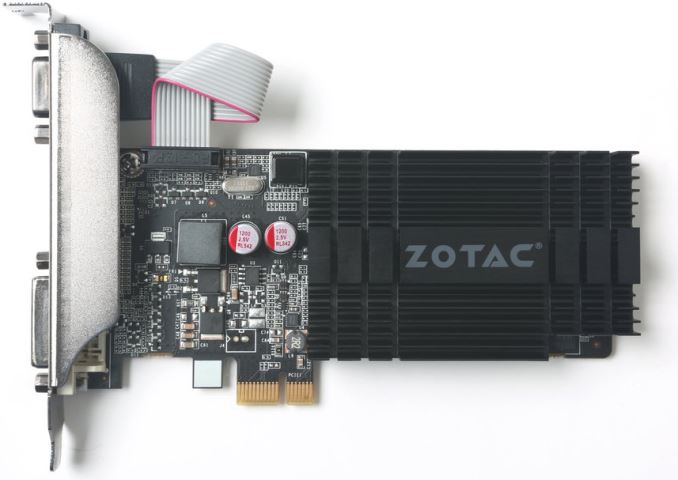





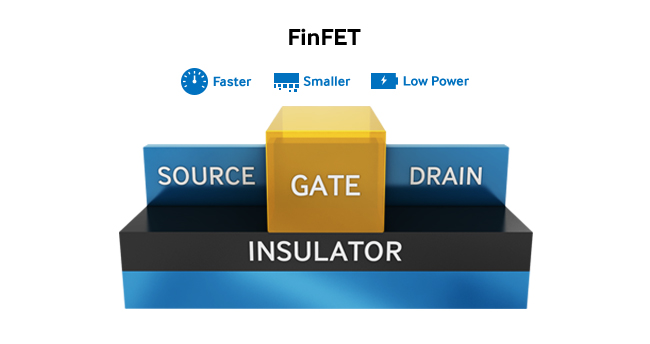

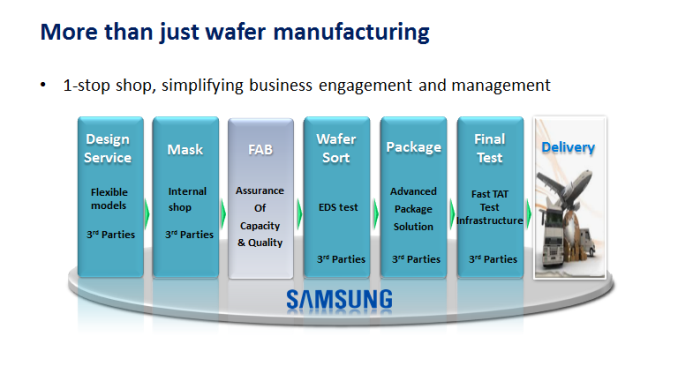
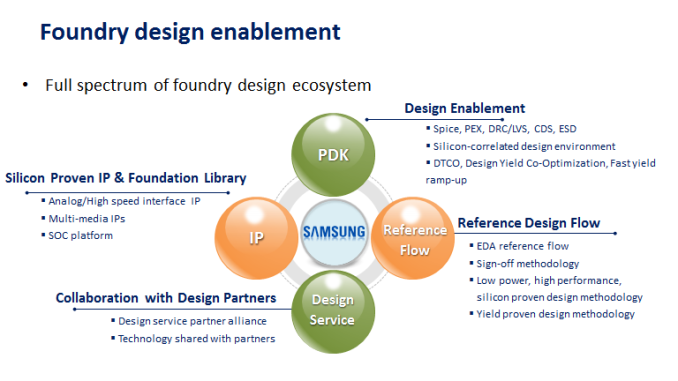
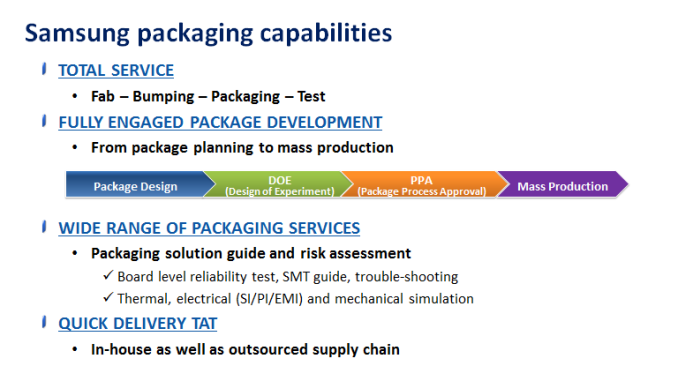



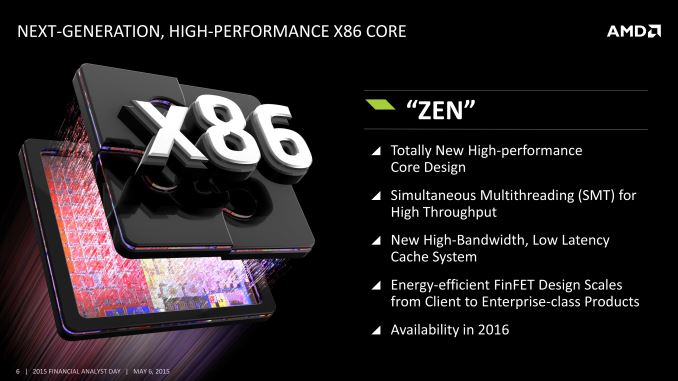
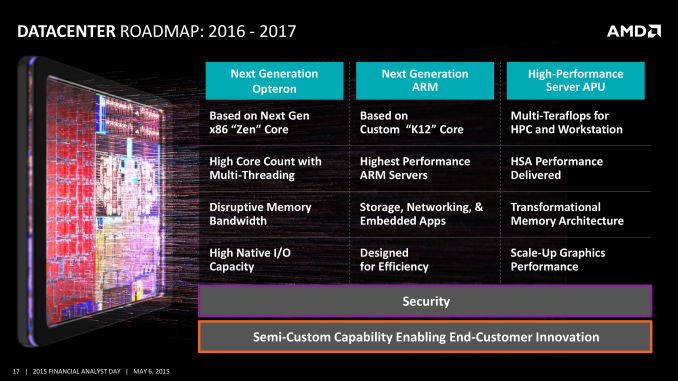
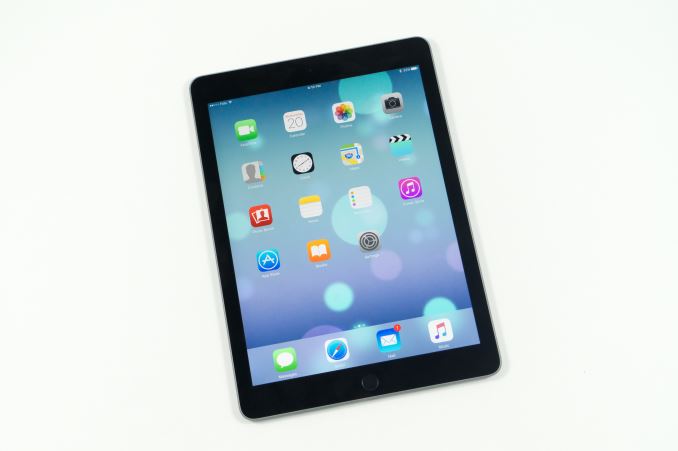
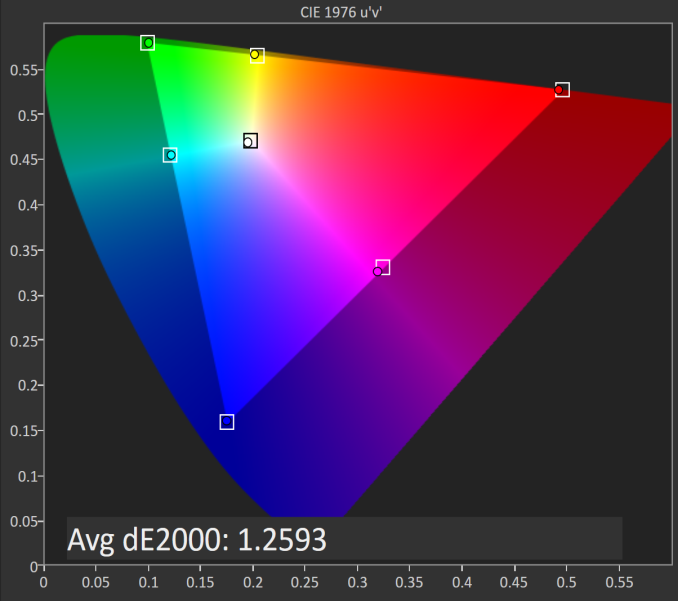
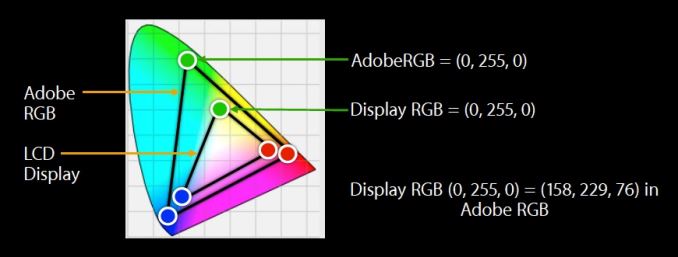
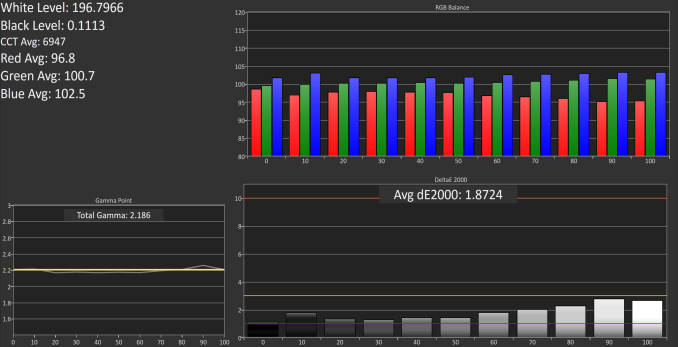
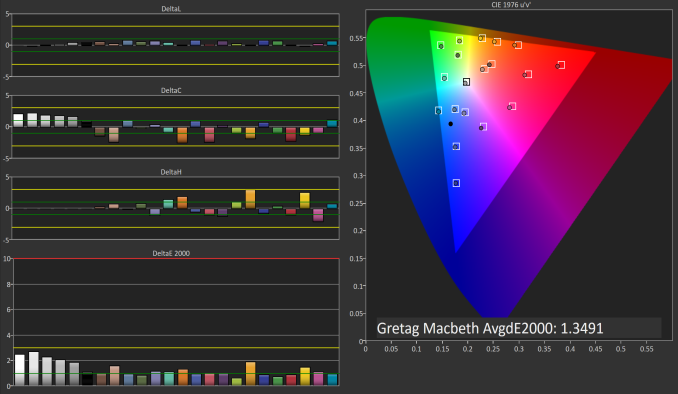
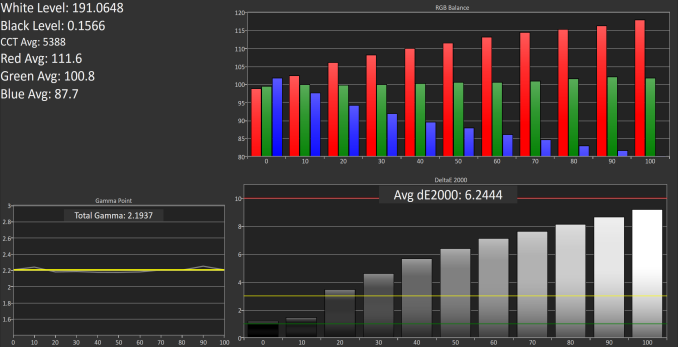
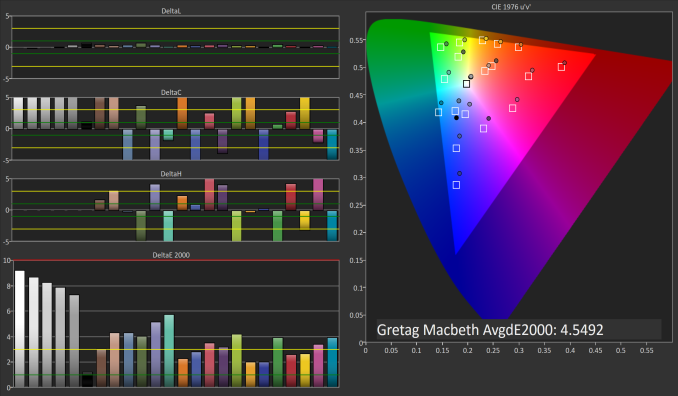
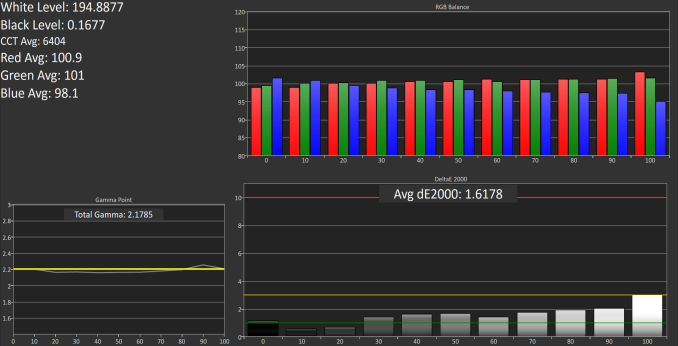
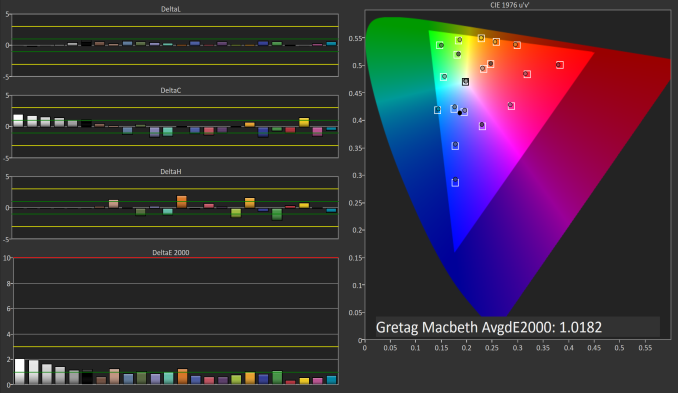
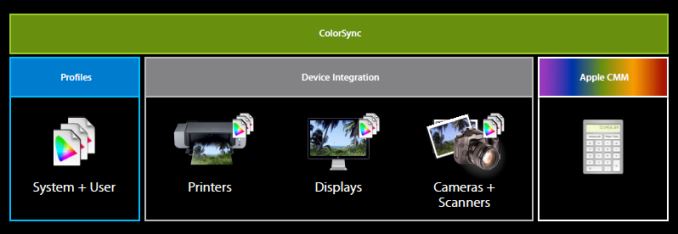
No comments:
Post a Comment